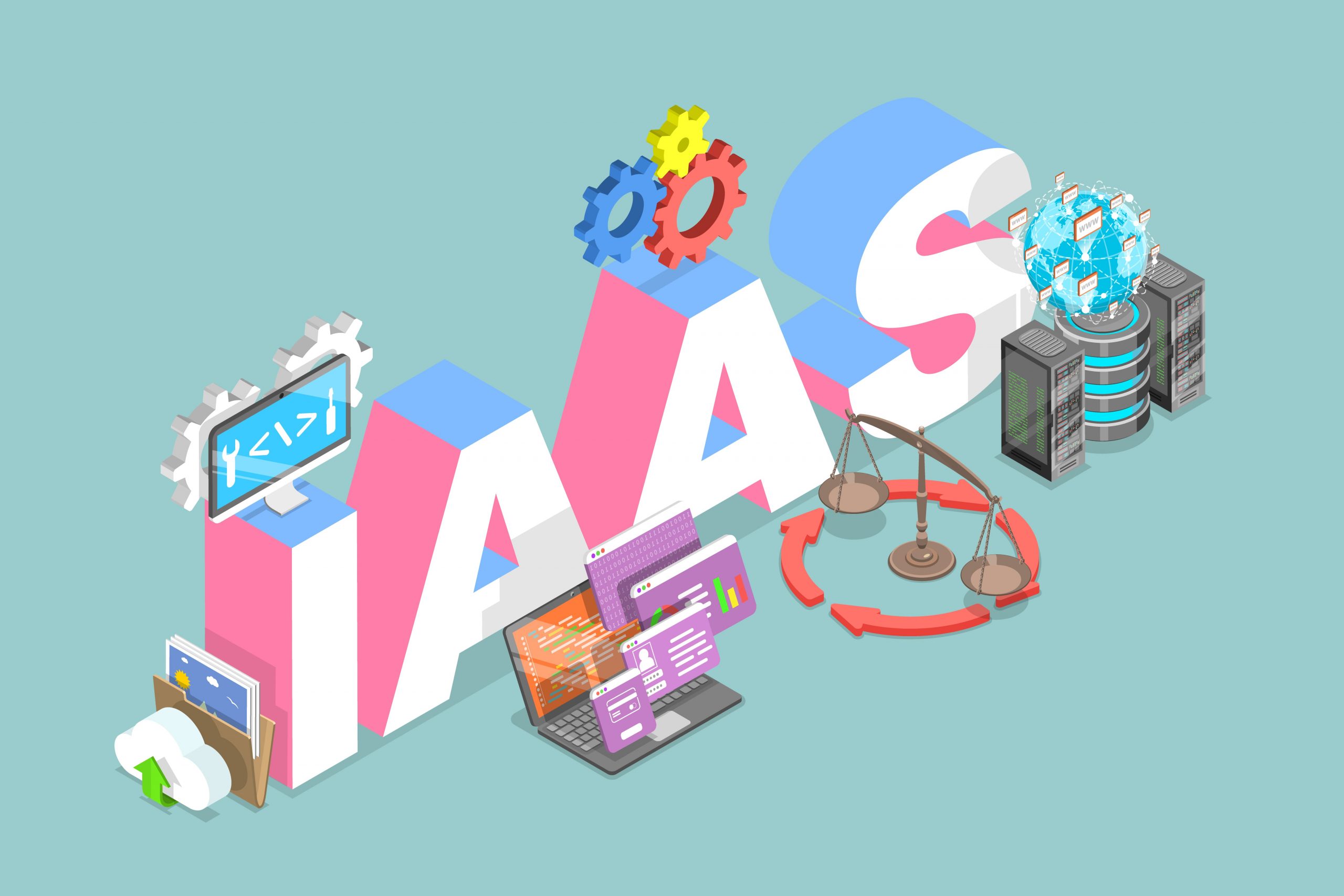In today’s fast-paced digital landscape, businesses constantly seek ways to stay competitive and embrace innovation. One technology that has gained significant traction in recent years is Infrastructure as a Service (IaaS). By leveraging the power of cloud computing, IaaS allows organizations to offload their infrastructure needs and focus on what truly matters – driving growth and delivering exceptional products or services.
What is infrastructure as a service (IaaS)?
Infrastructure as a Service, commonly called IaaS, is a cloud computing model that provides virtualized resources over the Internet. In simpler terms, it allows businesses to rent and manage their entire IT infrastructure – including servers, storage, networking components, and even operating systems – from a third-party provider.
With IaaS, companies no longer need to invest in expensive hardware or worry about maintaining physical data centres. Instead, they can use these resources on-demand through a pay-as-you-go pricing model. This flexibility enables organizations to scale their infrastructure up or down based on their current needs without any upfront costs.
By leveraging IaaS solutions, businesses gain numerous benefits. It eliminates the need for substantial capital expenditures by shifting the burden of hardware procurement and maintenance onto the provider’s shoulders. This not only reduces costs but also frees up valuable internal resources that can be redirected towards more strategic initiatives.
IaaS offers unparalleled scalability and agility compared to traditional server-based setups. Organizations can easily add or remove resources according to demand spikes or changing business requirements with just a few clicks. This level of adaptability ensures optimal performance while avoiding costly underutilization of unused infrastructure.
Benefits of infrastructure as a service (IaaS)
Infrastructure as a Service (IaaS) offers numerous benefits that empower businesses to innovate and scale effectively. Here are some key advantages of adopting IaaS:
1. Cost Savings: One of the main benefits of IaaS is its cost-effectiveness. With IaaS, businesses can avoid the upfront costs of purchasing and maintaining physical hardware. Instead, they pay for the resources they use on a pay-as-you-go basis. This helps reduce capital expenses and allows businesses to allocate their budget more efficiently.
2. Scalability: Another advantage of IaaS is its scalability. Businesses can quickly scale up or down their IT infrastructure based on their needs at any given time. This flexibility allows organizations to handle increased demand during peak periods without experiencing performance issues or investing in additional hardware.
3. Enhanced Performance: By utilizing IaaS, businesses can leverage state-of-the-art data centres and network infrastructures provided by the service provider. These facilities often have redundant systems to ensure high availability and reliability, resulting in improved performance for applications and services.
4. Agility: With IaaS, businesses gain greater agility when deploying new applications or services quickly and efficiently. The cloud-based nature of IaaS enables faster provisioning times compared to traditional physical infrastructure setups, allowing companies to respond swiftly to market demands and stay ahead of competitors.
5. Disaster Recovery: Implementing comprehensive disaster recovery strategies can be complex and costly for many organizations. However, with an IaaS solution, disaster recovery capabilities are often built-in or available as add-on services from the provider itself. This ensures that critical data is protected through automated backups and replication across multiple geographically dispersed locations.
6. Improved Security: Contrary to common misconceptions about cloud security, reputable IaaS providers offer robust security measures designed to protect customer data within their environments.
IaaS versus PaaS versus SaaS
When it comes to cloud computing, there are three main models that businesses can choose from: Infrastructure as a Service (IaaS), Platform as a Service (PaaS), and Software as a Service (SaaS). While these terms may sound similar, they each offer different levels of services and capabilities.
IaaS provides the foundation for cloud computing by offering virtualized computing resources over the internet. With IaaS, businesses can access virtual machines, storage, and networking capabilities without investing in physical hardware. This allows for scalability and flexibility, as resources can be easily added or removed based on business needs.
PaaS takes things a step further by providing not only infrastructure but also development tools and runtime environments. With PaaS, businesses can focus on developing applications without worrying about managing the underlying infrastructure. It offers pre-configured settings for application development and deployment.
On the other hand, SaaS is all about delivering software applications over the Internet. Instead of purchasing software licenses or installing applications locally on individual devices, users can access them through a web browser. This model eliminates the need for maintenance and updates since the service provider manages everything.
So, how do these models differ? In short:
– IaaS focuses on providing virtualized infrastructure components such as servers, storage, and networking.
– PaaS goes beyond infrastructure by offering additional tools for application development.
– SaaS delivers fully functional software applications accessible via the internet.
What’s the difference between IaaS and serverless?
What’s the difference between IaaS and serverless? This is a common question that arises when discussing cloud computing services. While both offer flexibility and scalability, there are critical differences between the two.
Infrastructure as a Service (IaaS) provides businesses with virtualized computing resources over the Internet. With IaaS, organizations can rent virtual machines, storage space, and network resources from an IaaS provider. This means businesses have more control over their infrastructure, as they can manage operating systems, applications, and other software components.
On the other hand, serverless computing eliminates the need for businesses to manage servers or infrastructure. In this model, developers focus solely on writing code without worrying about managing servers or scaling applications—serverless platforms automatically provision and scale resources based on demand.
One significant difference between IaaS and serverless is how they handle pricing. With IaaS, businesses pay for what they use – typically by the hour or month – allowing them to scale up or down as needed. However, in serverless computing models like AWS Lambda or Azure Functions, users only pay for actual usage of functions triggered by events such as API calls or data changes.
Things to consider when choosing an IaaS provider
When choosing an Infrastructure as a Service (IaaS) provider, there are several important factors to consider. Making the right choice can have a significant impact on your business’s success and ability to innovate. Here are some key things to consider when evaluating different IaaS providers.
1. Reliability and Performance: One of the primary reasons for adopting IaaS is to improve reliability and performance. Look for a provider with high availability, scalability, and robust infrastructure. Consider their track record regarding uptime guarantees and response times during peak usage.
2. Security Measures: Data security is crucial when entrusting your infrastructure to a third-party provider. Ensure the IaaS platform has robust security measures such as firewalls, encryption, multi-factor authentication, regular backups, and intrusion detection systems.
3. Cost Structure: Understand how the pricing model works with each potential provider. Some charge based on resource consumption or usage, while others offer fixed monthly plans with specific limitations or add-ons at an additional cost. Evaluate which pricing structure aligns best with your budgetary needs.
4. Scalability Options: As your business grows or experiences fluctuations in demand, it’s important to have the flexibility to scale up or down quickly without hassle or downtime disruptions from your IaaS provider’s end.
5. Technical Support: Consider what level of technical support is provided by each prospective IaaS provider—24/7 availability should be a priority, along with experts who can address any issues promptly.
6. Compatibility: Assess whether the chosen IaaS solution integrates seamlessly with your existing IT systems and applications—or if migration will be smooth—allowing you uninterrupted access to critical resources during transition phases
7. Vendor Lock-In Concerns: Research whether switching providers would be straightforward if needed later on—the last thing you want is being tied down due to proprietary technologies used by an inflexible vendor
Why build a Red Hat cloud?
Building a Red Hat cloud can be an excellent choice for businesses to enhance their infrastructure as a service (IaaS) capabilities. With Red Hat’s extensive experience and expertise in open-source technologies, they offer robust solutions that empower organizations with greater flexibility, scalability, and innovation.
1. Open source advantage: Red Hat is known for its commitment to open-source software, which allows businesses to take advantage of the collective knowledge and contributions from the global community. By building a cloud on Red Hat technology, companies can harness the power of open-source tools and frameworks without being tied down by proprietary systems.
2. Security and reliability: Red Hat has built its reputation for providing reliable solutions. The company offers enterprise-grade security features integrated into its IaaS platform, ensuring protection against potential threats while maintaining high availability for critical workloads.
3. Flexibility and scalability: One of the key advantages of building a Red Hat cloud is the flexibility it provides in terms of resource allocation and scaling capabilities. With easy-to-use management tools like Ansible automation, users can quickly provision resources as needed, allowing them to adapt to changing business requirements seamlessly.
4. Integration with existing infrastructure: Many businesses already invest in various IT systems or applications that must integrate smoothly with their new IaaS platform. Red Hat offers seamless integration capabilities through its comprehensive suite of products like OpenShift Container Platform and RHEL (Red Hat Enterprise Linux), enabling organizations to leverage their existing infrastructure investment effectively.
5. Innovation-driven approach: Building a cloud on Red Hat technology opens up opportunities for innovation through access to cutting-edge technologies such as containerization (with Kubernetes) or serverless computing (with Knative). These modern approaches enable businesses to develop innovative applications faster while improving efficiency across teams.
6. Supportive ecosystem: Besides offering top-notch technology solutions, building a Red Hat Cloud also means becoming part of an extensive ecosystem comprising developers, partners, and a thriving community. This ecosystem provides access to resources,
Conclusion
In today’s fast-paced digital landscape, businesses require agility and innovation to stay competitive. Infrastructure as a Service (IaaS) provides the flexibility, scalability, and cost-effectiveness needed for creation. Reputable IaaS providers enable businesses to focus on core activities, ensuring rapid application deployment and operational efficiency. Red Hat Cloud, specializing in open-source technologies like OpenStack and Kubernetes, offers scalable infrastructure solutions with cost savings, automation, and seamless integration capabilities.


